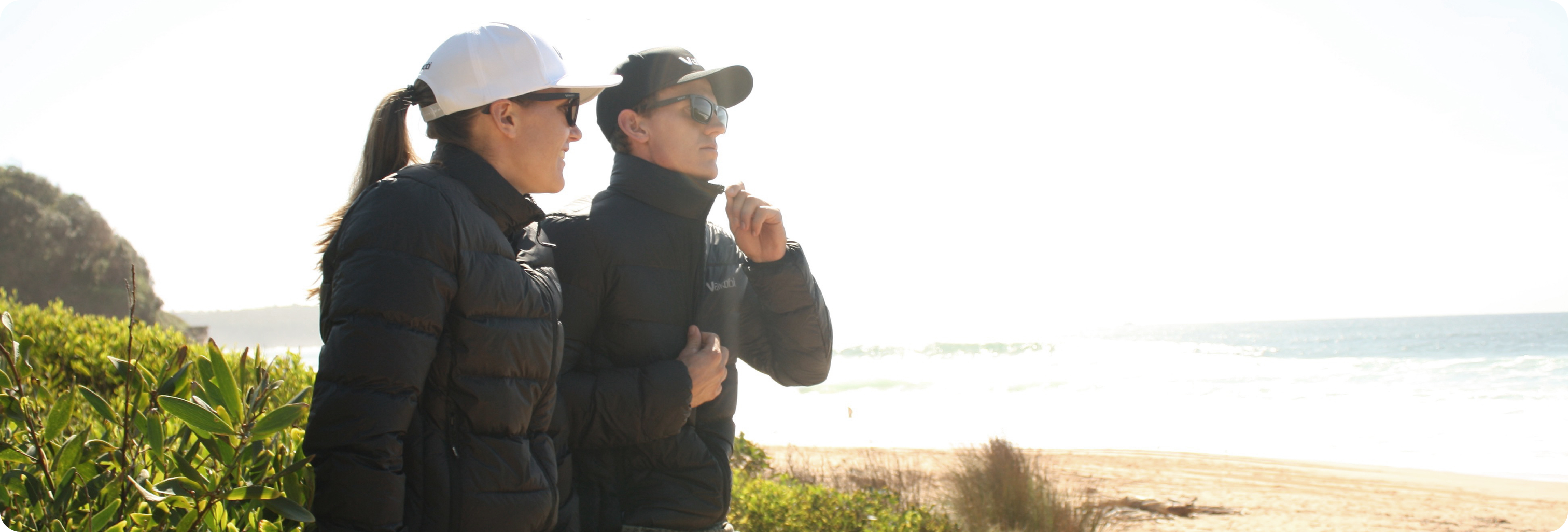From youth sailing to top level professional sailing - watersports like wing foiling are rapidly gaining popularity. Wing foiling (affectionately known in Australia as wing-dinging) is not just another entry in the growing catalogue of adrenaline-fueled sail sports; this surfing-sailing hybrid has taken sailing by storm and introduced a new generation of athletes to high-performance sailing. Here’s everything you need to know!
What is wing foiling?
Wing foiling involves the balance and finesse of riding a hydrofoil board while simultaneously holding and manoeuvring a wing-shaped sail. The ‘wing’ itself is inflatable and resembles a large handheld kite. It is solely operated using the upper body strength of the rider and does not attach to the board component as a windsurfer does.
What is a hydrofoil surfboard?
The second component of wing foiling is a hyrdrofoiling surfboard. This board resembles a short, thick paddle board and is usually between 5-7ft in length. It has a hydrofoil attachment (picture a sleek model aeroplane on the end of a short mast) on the underside of the board. You need a few more feet of water than traditional surfboards to get going, so training on a deeper lake or towing behind a boat is a good way to start. New athletes usually begin mastering the art of foil boarding before tackling wing trim.
How do hydrofoil surfboards work?
Hydrofoil surfboards harness the best bits of physics and hydrodynamics to give athletes the appearance of gliding effortlessly across the water. The hydrofoil itself consists of a long, vertical shaft (mast) connected to a wing-like structure beneath the board.
- The Front Wing is the larger curved part of the foil that generates lift. As the board moves forward, the front wing creates pressure differences above and below, lifting the board out of the water.
- The Rear Stabiliser (or Tail Wing) is the smaller wing at the rear of the mast that helps to stabilise the board and control the angle of the board’s nose.
- The Mast transfers the lift generated by the wings to the board above. Masts vary in length, with longer masts offering more clearance from the water.
How does hydrofoil surfing work?
Foil boarding usually begins with the rider taking a run up start, or ‘dock start’, off a platform before jumping onto the board in the water. Beach starts work a similar way, where the athlete runs straight into the surf before jumping onto the board at waist depth. This momentum-build is arguably the hardest part of the process and must be immediately followed up by powerful pumping. When the rider reaches a certain speed, the hydrofoil lifts the board out of the water, reducing drag and allowing for a smoother, more fluid ride. This unique blend of speed, agility, and freedom blends into an amazing feeling of weightlessness.
What should I wear wing foiling?
Wing foiling tends to involve a lot more swimming when you start out. For this reason having UV-proof and thermo-regulated gear is important to keep you comfortable. Lifejackets are also a MUST. Specialised lifejackets like the Vaikobi V4 and VXI lifejackets offer level 50 buoyancy with sleek, lightweight designs with great impact-protection for inevitable collisions with the water.
Browse Foiling Gear
Do hydrofoil surfboards have a motor?
Some hydrofoil surfboards have evolved to include motors on the back of the foil. These tend to make take-off and speed maintenance easier. They are classified as personal watercraft by Maritime services and are subject to wing classification speed limits.
What is downwind foiling?
Self-propelled hydrofoil boards, or ‘downwind foil boards’ don’t have motors and rely on winging and body pumping to stay upright. Downwind foiling is a type of wing foiling that takes advantage of direct wind propulsion for winging speed over small waves. This technique and point of sail allows you to cover more distance over shorter periods of time.
What’s the difference between wing foiling and wing surfing?
The primary difference here is the type of board an athlete uses. Wing foiling uses the specialised hydrofoil board as discussed above, whereas wing surfing doesn’t necessarily use a foil. Surfers who use traditional boards may use a wing to assist them in getting onto waves and for an extra speed boost.
Keen to know more? Check out Vaikobi’s guide to different foil sports here.
Article written by Vaikobi team member and sailor Sarah Imlay.

